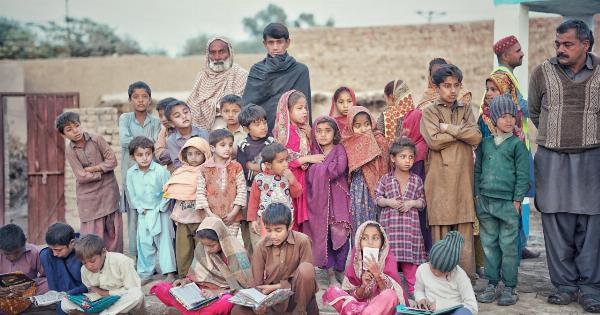The debate between nature and nurture has been a long-standing topic in the field of education.
While some believe that genetics (nature) play a significant role in a child’s academic abilities, others argue that environmental factors (nurture) have a more profound impact on their educational outcomes. One way to examine the influence of nature versus nurture in education is by studying twins. Twin studies offer unique insights into the relative importance of genetic and environmental factors in shaping educational achievements.
Twin Studies: Understanding the Basics
Twin studies have been instrumental in elucidating the nature versus nurture debate. Twins can be divided into two types: identical (monozygotic) twins and fraternal (dizygotic) twins.
Identical twins come from a single fertilized egg that splits into two, resulting in two embryos with identical genetic material. Fraternal twins, on the other hand, are conceived when two separate eggs are fertilized by two different sperm cells, resulting in siblings who share, on average, 50% of their genetic material.
Heritability in Education
Heritability refers to the extent to which individual differences in traits or characteristics can be attributed to genetic factors.
Twin studies help us estimate the heritability of educational outcomes by comparing the similarities between monozygotic twins, who share 100% of their genes, and dizygotic twins, who share, on average, 50% of their genes. If monozygotic twins are more similar in their educational achievements than dizygotic twins, this suggests that genetics play a significant role in shaping educational outcomes.
The Role of Genetics in Academic Performance
Several twin studies have provided compelling evidence for the influence of genetics on academic performance. For instance, a study conducted by Johnson et al.
(2011) found that genetic factors accounted for approximately 60% of the individual differences in reading and math abilities among children. Another study by Bouchard et al. (1990) showed that the heritability of cognitive abilities in adult twins was estimated to be around 70%. These findings indicate that genetics play a substantial role in shaping academic performance.
The Impact of the Learning Environment
While genetics undoubtedly contribute to educational outcomes, the learning environment also plays a crucial role.
The quality of education, socio-economic status, parental involvement, and peer relationships are all environmental factors that can significantly influence a child’s academic progress.
Identical Twins: A Window into Nature
Identical twins provide a unique opportunity to study the impact of genetics on education. Since they share 100% of their genes, any differences in their educational achievements can be attributed largely to environmental factors.
Comparing the academic outcomes of identical twins raised in different educational environments can shed light on the importance of nurture in education.
Case Study: Identical Twins in Separate Schools
A study conducted by Segal and Watson (1998) explored the impact of school environments by examining identical twins who were intentionally placed in separate schools.
The researchers found that despite having the same genetic background, the twins exhibited differences in academic performance. This indicates that even with similar genetic makeup, environmental factors such as teaching methods, school culture, and peer influences can significantly shape educational outcomes.
Fraternal Twins: The Influence of Genetic Differences
Fraternal twins offer another valuable opportunity to disentangle the effects of genetics versus environmental factors in education.
Since fraternal twins share, on average, 50% of their genetic material, any differences in their educational achievements can be attributed to both genetic and environmental factors.
Case Study: Fraternal Twins in Similar Environments
A study conducted by Petrill et al. (2004) examined the academic performance of fraternal twins attending the same school.
The researchers found that the twins’ similarities in academic achievement were higher for subjects that were more influenced by genetics, such as math. In contrast, subjects influenced more by environmental factors, like reading, showed greater differences between the twins. This study highlights the significant influence of genetics on specific academic domains.
The Interaction Between Nature and Nurture
It is crucial to recognize that nature and nurture are not mutually exclusive but work in tandem to shape educational outcomes.
Genetics may predispose individuals to certain abilities or traits, but their development and expression are ultimately influenced by the environment.
The Importance of Early Interventions
Understanding the interplay between nature and nurture has important implications for education. Identifying children at genetic risk for academic difficulties can help educators tailor interventions that address their specific needs.
Early interventions that combine targeted educational strategies with appropriate environmental support can significantly improve academic outcomes for these children.
The Need for Equitable Educational Environments
Nature and nurture both play significant roles in shaping educational outcomes. However, it is important to ensure that all children have access to high-quality educational environments that can support their learning and development.
Addressing social and economic inequalities, providing resources to underprivileged communities, and promoting inclusive educational policies can help create a more equitable learning environment for all students.
Conclusion
The nature versus nurture debate in education is a complex and multifaceted issue. Twin studies have been instrumental in understanding the relative contributions of genetics and environmental factors in shaping educational outcomes.
While genetics play a significant role in academic performance, the learning environment and various socio-economic factors also exert a powerful influence. Recognizing the interaction between nature and nurture can guide the development of effective educational interventions and promote equity in education.






























